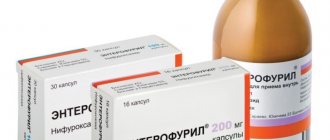It is known that most holidays nowadays are not complete without drinking alcoholic beverages, which have already become a symbol of any celebration. Many joyful and sad events in life are accompanied by the consumption of this intoxicating product. Today, a large number of people drink alcohol, and 2/3 of them believe that it does not harm their health at all. However, it is not.
Since many are accustomed to alcoholic beverages and cannot imagine celebrating any event without it, this greatly undermines a person’s condition and also negatively affects his health. Doctors say that alcohol is a poison that, although slowly but persistently, worsens human health. It is worth noting that alcohol has a powerful negative effect on all human systems and organs, so it is recommended to take it in small dosages and no more than 3 times a week. Otherwise, an addiction will develop in which you will want to drink more and more.
As described in GOST, ethanol, present in every alcoholic drink, belongs to the group of potent drugs that first cause the production of the happiness hormone, and also increase the body’s arousal, and then deal a crushing blow to the nervous system. It is important to note that any alcoholic product, regardless of its strength and method of production, contains ethanol, therefore, when drinking alcohol, it can be said that a person is involved in drug addiction.
How does alcohol affect the body?
Everyone knows that alcohol negatively affects our body. The degree of destructive effects depends on gender, age, body weight, dose of alcohol, genetic characteristics, etc.
The malicious action begins with:
- weight gain (alcoholic drinks are high in calories),
- sleep disorders (ethanol is a psychotropic substance that reduces the most important phase of REM sleep),
- changes in a person’s appearance (alcohol literally dries out the body, stealing important substances from it, for example, vitamins),
- stress (alcohol interferes with the chemical processes of the brain, which only aggravates stress),
- feelings of fatigue (weakness only accumulates when drinking alcohol).
Effects of alcohol on the brain
Alcohol is a poison that can kill brain cells. The destructive effect is explained by the fact that the concentration of ethanol in brain tissue is higher than in peripheral blood. Even more dangerous is the effect on the human psyche. Alcohol has a stimulating effect on all chemical systems of the brain.
At first we may feel drowsiness, muscle relaxation and euphoria. The feeling of intoxication is caused by an effect on the inhibitory systems of the brain. The feeling of euphoria is associated with the production of neurotransmitters that are responsible for the feeling of satisfaction and happiness. This brain reaction to alcohol leads to the formation of addiction, because drinking ethanol turns out to be the easiest and most accessible way to get the desired feeling of euphoria.
It is worth noting that the body “gets used” to alcohol, and in the future to achieve the desired effect it needs a constant increase in the dose.
Effect on the liver
The liver is most resistant to toxins, but alcohol often leads to permanent damage. Liver damage from alcohol is divided into three main groups:
- Steatosis (obesity). It occurs with constant consumption of low doses of alcohol and can resolve on its own with prolonged abstinence from alcohol.
- Hepatitis. This is a consequence of long-term overuse and can occur in a short time. Severe forms require long-term treatment.
- Cirrhosis. In this case, liver restoration is impossible.
Alcohol and the gastrointestinal tract
Ethanol stimulates the secretion of gastric juice. Increased acidity leads to damage to the mucous membrane, the development of gastritis and stomach ulcers. Large doses of alcohol have a toxic effect on the pancreas. Even a single episode of ethanol poisoning can lead to pancreatitis.
Effects on the cardiovascular system
When ethanol enters the bloodstream, it causes hemolysis (destruction) of red blood cells, which can lead to anemia. The connection between alcohol consumption and the development of hypertension has been proven. Alcohol itself damages the vascular wall. This creates the “soil” for the development of atherosclerosis, a common cause of many heart diseases.
Genitourinary system
Ethanol easily penetrates the prostate and testicles, damaging their cells. As a result, infertility, prostatitis, prostate adenoma and cancer develop.
Lethal dose in milliliters
All alcoholic drinks are divided into three large groups depending on their strength. Each type is popular because everyone has different tastes. Some people prefer to drink very few drinks with high alcohol content, while others choose light options that do not require many snacks or non-alcoholic liquids.
- Low alcohol drinks. This is an alcohol with a low ethanol content, the amount of which usually fluctuates around 4-6%. This group includes all types of beer and cider.
- Medium in strength. In such drinks, the concentration of ethyl alcohol increases to 13-16 degrees. They are drunk neat, but require a variety of snacks. Medium drinks include wines, including sparkling ones.
- Strong alcohol. The standard ethanol concentration for them is 40%, but it can rise higher, up to 70% for absinthe. Traditional strong drinks are vodka, cognac, gin, whiskey, brandy and their analogues.
This gradation of all drinks leads to difficulties in calculating the permissible or lethal dose. It is logical to assume that for serious consequences of vodka you need to drink much less than wine or beer. In this regard, experts do not provide data on lethal doses of any specific drinks. They only name the life-threatening quantitative content of pure alcohol - ethanol. For an adult it is 300 ml
It is important to understand that death will occur if the specified amount is drunk within 5 hours or in a shorter period of time
It is difficult for a person unfamiliar with drug addiction to understand what 300 ml of pure alcohol is equivalent to. Doctors explain that the indicated amount is approximately 750 ml of vodka. Even one bottle of strong alcohol, drunk in less than 5 hours, causes irreparable harm to health.
Signs of ethyl alcohol poisoning
Symptoms of ethyl alcohol poisoning: disturbances in speech, gait, consciousness, emotions, behavior, agitation followed by lethargy. Severity of poisoning:
- Mild: incoherent speech, unsteady gait, decreased criticism of one’s own actions.
- Medium: all of the above, additionally euphoria gives way to aggression.
- Severe: the person is not oriented in the area and in time.
Fatal poisoning with ethyl alcohol is accompanied by depression of consciousness and protective reflexes of a person, up to respiratory arrest, convulsions, and coma.
Signs of ethanol poisoning appear gradually in various combinations. The severity of symptoms increases as the concentration of alcohol in the blood increases.
Permille: what is it?
If you look at the interpretation of the concept given in dictionaries, it becomes clear that the unit per mille is a thousandth part of something (including alcohol).
It would seem not so much! But... It must be remembered that alcohol itself, no matter in what dosage it is taken, is aimed at one thing - turning off a person’s consciousness.
The effects of alcohol on people of different genders occur differently. According to the latest information from research medical and scientific centers, the body of men is 70% liquid, and this figure is 10% less in women. Thus, we can conclude that girls lose reaction and self-control faster.
To avoid mistakes when recording the degree of intoxication, you need to take into account the following personal characteristics of a person:
- quantity and quality of drinks;
- type of alcohol (the amount of time required to remove ethanol from the body);
- age indicator, gender, height, weight;
- The ratio of the amount drunk to the total weight of a person.
There is a simple system “Translation of indicators as a tenth of the total percentage of liquid,” which looks like this:
- 0‰ = 0 = 0%;
- 0,16‰ = 0,00016 = 0,016%;
- 1‰ = 0,001 = 0,1%;
- 200‰ = 0,2 = 20%
Let's try to look at this system using a simple example.
An object
- man
Weight
- 82 kg
Amount of alcohol consumed
- 300 ml of vodka (which is approximately 6 glasses)
Ethyl alcohol
- 40 percent.
Remembering that the average man consists of 70% liquid, we get 57 kg 400 grams of water. The concentration of ethanol in this case is easy to calculate: 300 * 40 = 120 ml, and in grams 94 (120 * 0.78). It turns out that there are 84.6 grams of ethanol in the bottle. It becomes easy to calculate ppm: 84.6/57.4=1.47.
First aid for ethyl alcohol poisoning
Acute moderate to severe ethyl alcohol poisoning requires first aid as soon as possible. First, it is necessary to carry out a differential diagnosis between poisoning with methyl alcohol or other surrogates and regular alcohol. As a rule, poisoning with alcohol surrogates is characterized by the rapid development of a coma, pronounced disorders of the central nervous system: loss of vision, lack of urine output, a relatively small dose of alcohol, etc.
In the event of the development of alcohol intoxication, the following measures must be taken:
- If a person is unconscious or in a coma, he needs to be laid on his left side, his left arm bent and placed under his head, his right leg bent at the knee and hip joints. In this position, the victim will not be able to voluntarily roll over onto his back or stomach and will not choke on his own vomit until the ambulance arrives.
- If the victim is conscious, then he must be given a large volume of drinking water to induce vomiting. This will clear the stomach of unabsorbed ethyl alcohol.
- After reducing the frequency of vomiting, you need to take activated charcoal at the rate of 1 tablet per 10 kg of body weight (example: if a person weighs 83 kg, he needs to drink 8 - 9 tablets). Activated carbon will “bind” the remaining alcohol in the digestive tract.
- It is necessary to ensure that the victim drinks enough warm, strong, sweet tea to provide the body with a sufficient amount of glucose and stimulate the separation of urine.
This is where first aid for ethyl alcohol poisoning at home ends. All other activities must be carried out exclusively by medical personnel and in the conditions of a medical institution.
In the first 6 to 8 hours after stopping drinking alcohol, you should never take aspirin, analgin, or other painkillers and anti-inflammatory drugs. In combination with alcohol, they have an incredibly strong toxic effect on the gastric mucosa and liver.
Different volumes and their effects
A blood alcohol content of 3 ppm or more (air - 0 5 and 2 mg/m3) is not acceptable - this is a lethal dose for a person who drinks alcohol not too often and not too strong. Fans of vodka and similar strong drinks who are approaching a diagnosis of alcoholism acquire a high threshold of resistance (tolerance) to alcohol, so they reach a fatal degree of intoxication after drinking a larger amount of alcohol. On the contrary, people who do not drink at all can say goodbye to life if they ingest an amount of alcohol that slightly exceeds the permissible amount.
Symptoms of intoxication from 0-0 4 ppm and higher in the blood (0-0 29 mg/m3 in the air) are reflected in the following table.
| air | blood | description |
| 0-0 4 | 0-0 29 | Stage of relative sobriety with mild inappropriate behavior. A drunk person is excessively talkative, he is in a good mood, although there is a certain obsession. Although the test will not be able to reliably reveal how much vodka or other similar drinks were drunk, it is better to avoid meeting with the traffic police |
| 0 15-0 5 | 0 30-1 | Achieving this degree of intoxication is accompanied by an unjustified increase in self-esteem, the desire to “show character” by violating the norms of society and/or morality. A person loses the ability to concentrate, which means that he is unable to adequately assess the threat and loses control over coordination. At the same time, no matter how much vodka/beer/wine he drinks, the state of intoxication is ignored |
| 0 4-1 | 0 8-2 | Any permissible dose of alcohol has been exceeded, as evidenced by an unsteady gait, slowness of reaction, distortion of perception, drowsiness, nausea, a rapid transition from anger to fear, and then to apathy and back |
| 0 7-1 2 | 1 4-2 4 | The condition is inadequate, the dose of alcohol taken is almost lethal, the likelihood of coma is high |
| 1 1-1 6 | 2 2-3 2 | Symptoms are lethargy, apathy, lack of response to pathogens, and sometimes paralysis. The probability of death is extremely high, even if a person does not leave the house |
| 1 5-2 | 3-4 | The final, fatal degree of intoxication. Coma, paralysis, respiratory failure, circulatory collapse, hypothermia, death |
When the volume of alcohol in the blood exceeds 3 ppm, there is an extremely likely mortal danger to the health and life of the drinker and the people around him. If in a state of less intoxication (up to 0-8 ppm) it is strictly forbidden to drive in order to avoid problems with the traffic police, then a larger amount of ethanol ultimately means death due to paralysis of the respiratory tract or other similar reasons.
Treatment of alcohol intoxication with ethanol
In a hospital setting, patients with alcohol poisoning receive the following treatment aimed at reducing the symptoms of ethanol poisoning:
- gastric lavage using a gastric tube,
- intravenous infusion of glucose solution with ascorbic acid,
- injections of B vitamins,
- drip injection into a vein of solutions for detoxification of the body: Reamberin, Ringer's solution, Hemodez, etc.,
- diuretics (furosemide),
- if repeated vomiting persists, antiemetic drugs (Metoclopramide) are used,
- in case of development of a coma, the vital functions of the body are maintained (the work of the heart and respiratory system).
In case of poisoning with industrial alcohol containing impurities, alcohol surrogates, the antidote ethanol is used - ordinary alcohol, which is part of all alcoholic products. It is administered intravenously at a concentration of 33%. The toxic effect of surrogates is reduced because they are displaced by ethyl alcohol from biochemical reactions.
What determines the “lethal” dose?
Everyone tolerates alcohol differently, but there are general indicators that determine the lethal amount of a drink. These include age, health status and external parameters.
Person's age
The acceptable amount of alcohol differs among children, adolescents, middle-aged men and women, and older adults. It is determined by the totality of all circumstances, many of which depend on the number of years lived.
Children tolerate alcohol much worse than adults.
The negative consequences of exposure to ethanol drinks on a child appear much earlier and are more detrimental to a still growing and developing organism. An adult, weakened by chronic pathologies and age-related diseases, is also more susceptible to negative influences.
Young people, women and older people are those who are most affected by alcohol. Ladies tolerate it worse due to biological characteristics, so men are considered the most persistent. It is worth considering that people who drink periodically are more resilient than non-drinkers.
Initial health status
Tolerance is also affected by the presence of chronic diseases, due to which a weakened body is less able to fight the harmful effects of alcohol.
It is extremely dangerous to drink if you have pathologies of the heart and blood vessels, digestive and excretory systems.
A weak and sick body suffers from even a small dose of ethanol. Susceptibility is influenced by immune status, so people with weakened defenses will require a lower lethal concentration.
The size of the lethal dose is also influenced by the physique of the drinker. Overweight people tolerate alcohol less well due to the ability of fat to easily metabolize alcohol.
Extra options
The critical volume of spirits also varies depending on additional factors.
The harmful effects of alcohol are influenced by the following conditions:
- Snacks are the key to less drunkenness. Hot, fatty foods protect the digestive system by slowing down the absorption of alcohol. But you shouldn’t overload the body either, since the liver is less able to cope with the work.
- Temperature: the colder it is, the faster intoxication sets in and the worse the body tolerates strong drinks. It is also not recommended to suddenly change the environment or leave a hot room into a cool street.
- Heredity is an important factor in determining the lethal dose, as some people develop intolerance to ethanol. Because of this, even a small amount of alcohol becomes critical for such a person.
- The speed of consumption of alcoholic beverages plays an important role. It is recommended to take alcohol quickly, without prolonging the process for a long time, in order to reduce its harmful effects.
Consequences
With a single excessive consumption of alcohol, as a rule, everything is limited to vomiting, poor health and a hangover the next morning. However, the patient may die from ethyl alcohol poisoning if:
- vomit enters the respiratory tract,
- there was a disruption in the functioning of the cardiovascular system,
- acute renal or liver failure developed.
Death from ethanol occurs especially often in the cold season. More precisely, not from ethanol itself, but from hypothermia. Alcohol increases the body's heat transfer and causes depression of consciousness. If a person in a state of intoxication stays for a long time at a low temperature or, even worse, remains sleeping on the street, hypothermia develops and can lead to death. Thus, acute ethanol poisoning sets the stage for hypothermia.
With chronic alcohol intoxication, severe disturbances in the functioning of the central nervous system, heart, liver and kidneys develop. As a rule, they lead to the death of the patient, most often due to cirrhosis of the liver.
What is typical for people who follow the spiritual path in this way, with the help of ethanol?
Well, first of all, they are relaxed, they are absolutely open, their behavior is disinhibited, their nerve centers are working at full capacity and they are free in their actions. Further, they are hardy. Various difficult life circumstances, cold, wind, no matter what, it’s not scary for them as much as people who drink little or don’t drink at all.
Drinkers are much less likely to die from accidents, including falls and collisions. Not only are they long-lived in themselves, but according to the theory of probability, they are less likely to die from accidents.
Well, then these are very friendly people who are ready to share. I think that everyone has encountered situations when a highly spiritual person on a bench invites you to join him in consuming ethanol , obviously wishing for good. Skeptics may argue that fights between drunk people do occur. This is true, but you need to be aware that these are neophytes. These are people who have not yet drunk enough, they do not train regularly, and we must make allowances for this that people have just begun their movement along the spiritual path, so they should not be taken seriously.
As for culture for our population - this is the main key difference from the animal world, which many take very seriously, alcohol gives a huge cultural Boost (increase, growth, increase, strengthening).
These are great politicians, and great scientists, and writers, and artists, and, of course, musicians. In general, what impact did ethanol have on the formation of musical culture, on the formation of new genres, the emergence of great works, it’s possible to write 2 or 3 doctoral dissertations or make a large monograph.
At the same time, what is important is that ethanol not only allows people to produce ideas and develop them, it also preserves the life of the bearers of these ideas. Those musicians who preferred other mind-expanding substances are all 27 in the club. But Lemmy Kilmister and Mick Jagger are still alive, they drink ethanol , they continue to delight us with their finds, or rather, they continue to contribute to culture. This is not just a pleasant cultural effect, it is prolonged and long-lasting.
Alcohol elimination process
The rate at which alcohol is processed in the body is a rather lengthy process. On average, in men it is up to 0.15‰ per hour, in women this figure does not exceed 0.1 ppm.
In practice, it looks something like this: the alcohol obtained from two glasses of beer disappears after 3 hours. The body will need the same time to process 50 grams of cognac, vodka or other strong drinks.
What is a safe level of alcohol consumption? After drinking 200 g of vodka the day before, you cannot drive a car for another 12 hours.
Alcohol content unit
Permille is a part per thousand of ethanol, i.e. 1/10 of 1% liquid. When blood alcohol is determined, we must remember that the degree of intoxication largely depends on age, health and even gender. The minimum dose is different for men and women. In men, the proportion of total fluid in the body is 70%, but in women it is only 60%. The ppm sign is designated as ‰, but it has nothing to do with percentage. All calculations in this case are carried out differently. For example, the share of alcohol is calculated as follows:
- 0 ‰ = 0 = 0%;
- 0.7 ‰ = 0.0007, that is, 0.07%;
- 300 ‰ = 0.3, that is, 30%;
- 100 ‰ – 0.1, that is, 10%;
- 1 ‰ = 0.001, that is, 0.1%, etc.
When translating, it must be taken into account that 1 ‰ is one thousandth of the content of pure alcohol, not just any alcohol, but pure alcohol. For example, for a half-liter bottle of vodka, the amount of pure alcohol is only 200 ml. For beer or wine this amount will be even less, so calculations are made based on this factor.
If you need to reduce the dose and calculate it correctly, you must remember that the maximum concentration in the blood occurs after about 30 minutes. Permille makes it possible not only to find out how much to reduce the dose, but also other data:
- The level of real and permissible concentration of alcohol in the blood at any necessary time point.
- Volumes of alcohol.
- Time during which you can decide how to reduce the level of alcohol or completely remove it from the body.
To take measurements and find out how much you can reduce your alcohol level, you need to use the following parameters:
To calculate the minimum permissible alcohol content level, you need to follow certain steps. For example, if a man’s weight is 75 kg and the amount of alcohol consumed was 250 ml (vodka), then the calculations are carried out as follows:
- at 70% fluid of the total body weight in kilograms, the value is 53.9;
- pure alcohol has a share of 100 ml, in grams it will be 71.1 g (100 * 0.78 = 79, that is, the density of pure alcohol is 70-10% = 71.1 g);
- Using the indicated calculation tools, the ppm is equal to 1.32.
What conclusion can be drawn from the example presented? For a young man, 250 ml of vodka corresponds to 1.32 ppm, and this is a slight degree of intoxication
. This is a legal blood alcohol level that is relatively safe and will not cause harm. But a larger amount will already lead to an average level of intoxication, and negative consequences for the body are possible. But the permitted blood alcohol level for drivers is much lower, i.e. an amount of 250 ml will be excessive; you cannot drink that much before driving a car.











